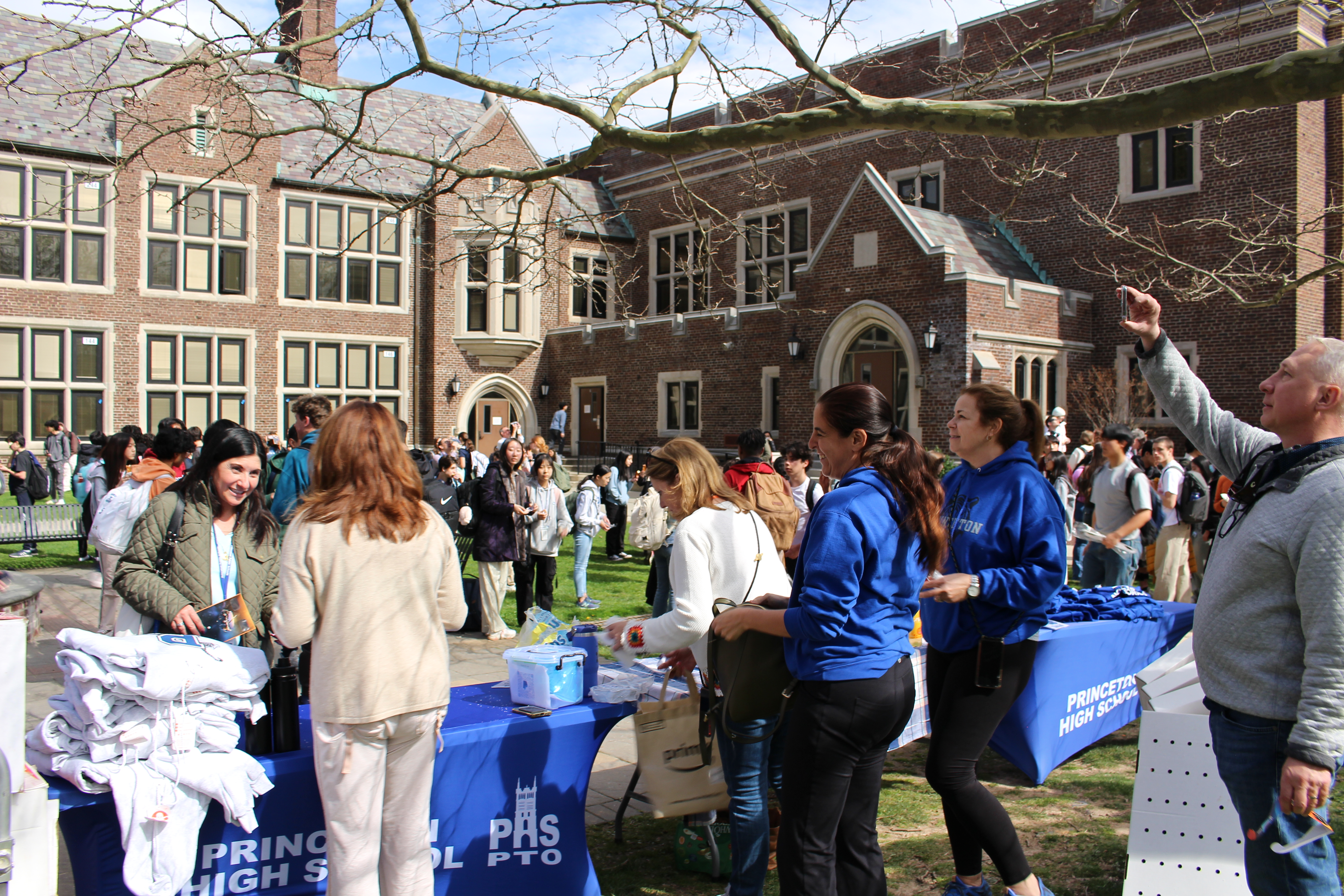PHS watches the solar eclipse
April, 2024
Begining on Monday, April 8, at 2:09 p.m., the moon’s shadow darkened the grounds of PHS as a solar eclipse traveled from Texas to Maine. Although Princeton was not in the path of totality, it did experience 90 percent eclipse, with peak totality at 3:24 p.m.. Students gathered outside PHS to experience the celestial event, observing the solar eclipse with viewer cards, thin cards with solar-filter cutouts that block ultraviolet and infrared lights, provided by the school in partnership with the Interstellar Mapping and Acceleration Probe (IMAP) organization at Princeton University.
Dr. Joy Barnes-Johnson, Science Supervisor for Grades 6–12, initiated the process of communicating with teachers earlier this year to plan for the viewing of the solar eclipse as a part of her vision to make this school year more memorable for science students within PPS.
“How are we going to help every child experience science in a meaningful way? This year, we’ve had two celestial events. We had the partial eclipse in October, and then there’s this one,” said Barnes-Johnson. “My primary role as the supervisor is to cast vision in the beginning and make sure that we have a process in place to bring things into alignment with our vision.”
Getting solar eclipse viewers for students across the district was a collective effort between Barnes-Johnson, Littlebrook teacher Martha Friend, former PPS teacher Dr. Steven Carson, and Princeton University.
“Dr. Carson is a veteran teacher here in Princeton. He’s got ... relationships with the faculty at the university. So, he was already working behind the scenes with Martha Friend over at Littlebrook [to] work with the university ... on getting [solar eclipse] viewers,” Barnes-Johnson said.
Carson, a 7th grade science teacher at Princeton Middle School, has a passion for Earth Science. He was previously a researcher in the U.S. National Oceanic and Atmospheric Administration’s Geophysical Fluid Dynamics Laboratory, and has worked with Princeton University’s Department of Geosciences. Given the two solar eclipses that were set to occur during the school year, Carson began planning early in the year.
“I’ve always been interested in science and ... astronomy. My first eclipse was probably back when I was in middle school ... we watched [it in] my backyard and my dad put together a little screen that we could project the sun onto. It was just such a fun time and I’ve seen other eclipses since that time ... I went to see the total eclipse in 2017 and it was pretty exciting,” said Carson.
He wanted to bring the celestial spectacle to his students, and allow everyone to experience this event, given that the next solar eclipse in mainland United States is in 20 years.
“I contacted the IMAP program and got in touch with people there. They had told me that they had boxes of 1,500 viewers. I didn’t really need that many of them for the middle school but then when I talked to Dr. Barnes-Johnson, I realized that 1,500 would be a good number for [PHS],” Carson said.
The solar eclipse glasses that were provided to PHS were the result of a partnership between the district and Princeton University, specifically the Astrophysics Department and IMAP. Barnes-Johnson hopes to build upon the schools’ connections in order to provide more stem-related opportunities for PPS students in the future.
“[The glasses] were a complete donation, which is just beautiful ... I’m hoping to build on this so that we have several ways in which Princeton Public Schools can benefit from our close proximity with Princeton University. Making sure that we are able to capitalize in a meaningful way is key. My goal is to have more outreach opportunities where we can accept the outreach of the university and other organizations who want to support stem engagement,” Barnes-Johnson said.
With the university’s donation of the solar eclipse viewers providing a unique experience for students to safely view the eclipse, both Barnes-Johnson and Carson agreed that the opportunity was a chance for students to apply their scientific knowledge to phenomena in the real world.
“We already spent some time modeling eclipses in the classroom but having this event happen makes it more real to [the students]. They could actually see some things we had talked about in the classroom ... which is truly really helpful in our science curriculum,” Carson said.